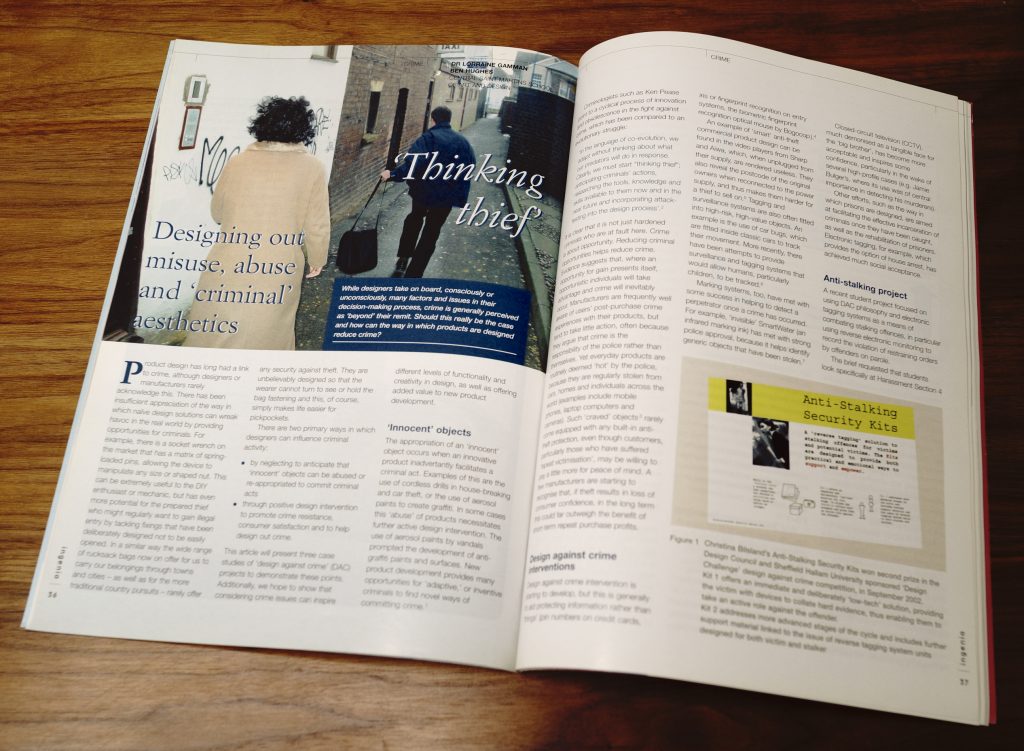With Prof. Lorraine Gamman, a paper for the journal Ingenia, published February 2003. Documents a series of projects undertaken with MA students in collaboration with the Design Against Crime research centre at Central Saint Martins.

Product design has long had a link to crime, although designers or manufacturers rarely acknowledge this. There has been a lack of appreciation of the way in which naïve design solutions can wreak havoc in the real world by providing opportunities. For example, there is a socket wrench on the market that makes use of a matrix of spring-loaded pins, allowing the device to manipulate any size or shaped nut. This may be extremely useful to the DIY enthusiast or mechanic, but has even more potential for the prepared thief who might regularly want to tackle fixings that have been deliberately designed not to be easily opened to gain illegal entry. In a similar way the wide range of ‘rucksack’ bags now now on offer to self-styled ‘urban nomads’ to carry their belongings across towns and cities — as well as the more traditional country pursuits — rarely offer any security against theft. They are unbelievably designed so that the wearer cannot turn to see or hold the bag fastening and this, of course, simply makes life easier for pickpockets. There are two primary ways that designers influence criminal activity. The first is from neglecting to anticipate that ‘innocent’ objects may be abused or re-appropriated to commit criminal acts. The second is through wilful design intervention to promote crime resistance, consumer satisfaction and to help design out crime from our lives. This paper will present three case studies of ‘design against crime’ (DAC) projects to demonstrate these points. Additionally, we hope to show that considering crime issues can inspire different levels of functionality and creativity in design, as well as offering “added value” to new product development.
Ingenia, February/March 2003 Issue 15 ISSN 1472–9768


Hughes and Gamman (2003) Ingenia, Royal Academy of Engineering, 1 (15) p.36–43
